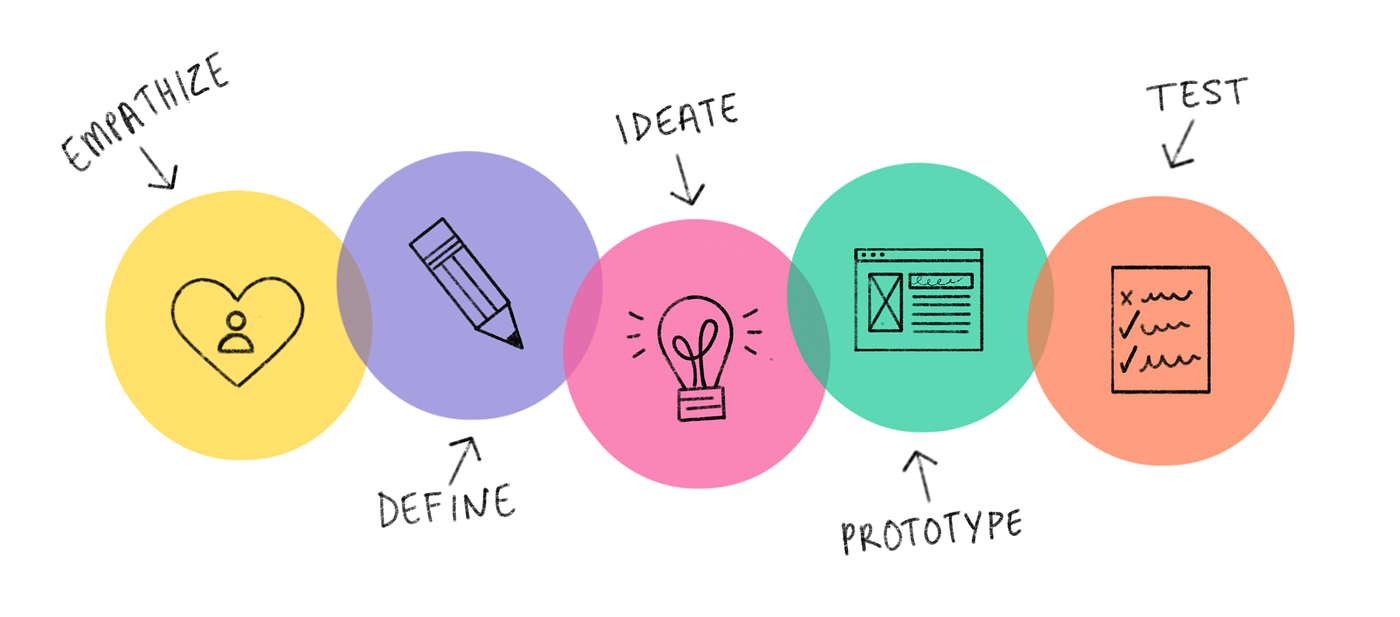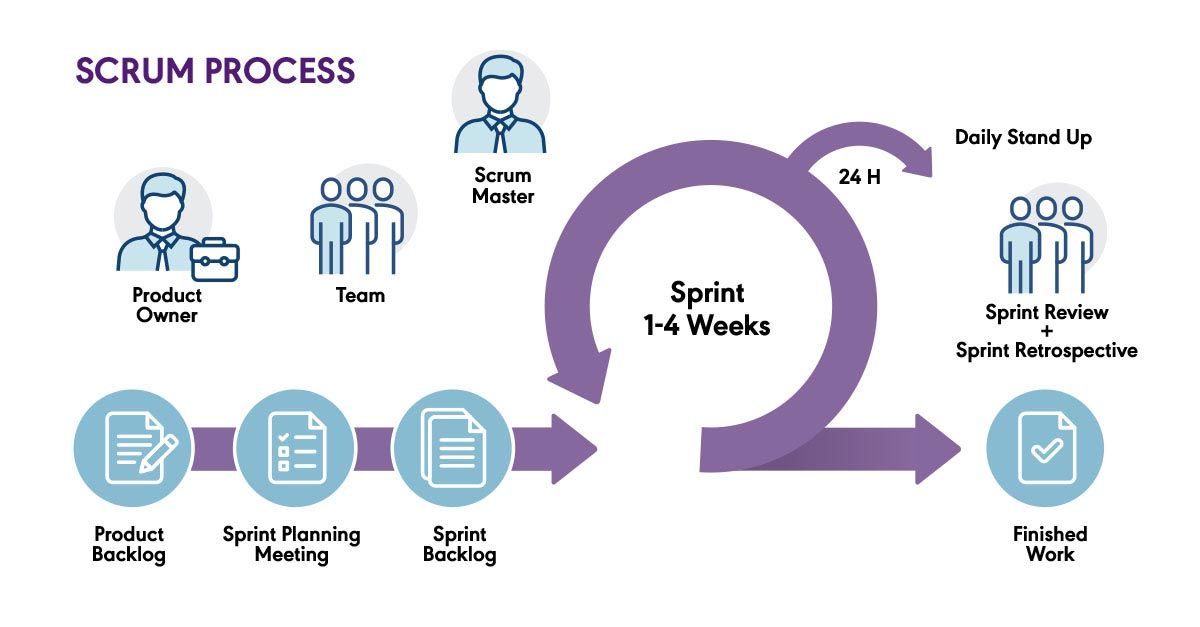Building a Great Product: A Practical Guide Through Design Thinking, Lean Startup, Scrum, and Teamwork
Explore practical insights into creating remarkable products using Design Thinking, Lean Startup, Scrum, and teamwork. Learn how to define problems, build MVPs, organize sprints, and foster effective collaboration for success. Recommended readings included.

Creating a remarkable product is no walk in the park. It demands an unwavering commitment to principles that can guide you through the intricacies of product development. In this comprehensive guide, we'll delve deep into the practical aspects of building a great product, harnessing the power of Design Thinking, Lean Startup, Scrum, and the pivotal role of teamwork.
Design Thinking - A User-Centric Approach

Design Thinking is not just a concept; it's a compass that points directly to your users' needs. Transitioning from ideation to implementation involves a series of steps, each more practical than the last.
Empathize: Understand Your Users
You must wear the shoes of your users to know where they pinch. Begin by conducting user interviews and surveys to immerse yourself in their world.
Once you deeply understand your users, it's time to define the problem.
Define: Define the Problem Precisely
In the real world, problems come in all shapes and sizes. To build a great product, you need to define the problem accurately.
Example: Let's say you're developing a task management app. Through user interviews, you discover that procrastination is a common issue. Your problem statement could be, "How might we help users overcome procrastination and manage tasks effectively?"
With a well-defined problem statement, it's time to let your creativity flow.
Ideate: Unleash Your Creativity
Innovation is about thinking beyond boundaries. In this phase, brainstorming is your best friend. No idea is too outlandish; every idea has potential.
Example: You brainstorm features like gamification to make task management engaging and goal-setting mechanisms to encourage users to achieve their goals.
Now, let's bring those ideas to life.
Prototype: Create Tangible Solutions
A practical approach is to transform your ideas into tangible prototypes. Prototypes are like sketches of your product, and they're crucial for testing.
Example: You create a low-fidelity prototype of your task management app with gamification features and goal-setting options.
Prototypes are only the beginning. It's time to put your ideas to the test.
Test: Collect User Feedback
Practicality is about refining and improving. Share your prototype with users, gather feedback, and iterate.
Example: Users find the gamification feature more engaging, but the goal-setting mechanism needs simplification. You make the necessary adjustments.
The iterative process continues until you've refined your product to perfection.
Section 2: Lean Startup - Build, Measure, Learn

Lean Startup is about taking a practical approach to product development by focusing on building, measuring, and learning.
Build-Measure-Learn Cycle
This cycle is the heartbeat of Lean Startup. It's a practical way to transform your ideas into reality and make data-driven decisions.
Example: Imagine you're launching a delivery service for local businesses.
To embark on this journey, you build a Minimum Viable Product (MVP).
Build: Create an MVP
Practicality in Lean Startup means quickly getting your product out there to test the waters. The MVP should be the most basic version of your product.
Example: Instead of developing a full-fledged delivery app, you create a simple website where users can request deliveries.
With your MVP in the wild, it's time to gather real-world data.
Measure: Collect Data and Metrics
In the practical realm, data is your best friend. Measure the performance of your MVP and gather insights.
Example: You measure the number of delivery requests, user engagement, and feedback from businesses and customers.
With data in hand, it's time for a crucial decision: pivot or persevere.
Pivot or Persevere
Pivoting means changing your product strategy based on what you've learned. Persevering means sticking to your current plan.
Example: You notice that while delivery requests are low, there's significant interest in a grocery shopping assistance service. You decide to pivot and focus on grocery shopping assistance.
Lean Startup thrives on continuous improvement.
Continuous Deployment
In the practical world, there's no room for complacency. Embrace a culture of continuous improvement, where small changes are deployed frequently.
Example: You regularly update your website based on user feedback, adding features like real-time order tracking and a user-friendly interface.
Section 3: Scrum - Agile Development for Efficiency

Scrum is a practical approach to product development that ensures efficiency through agile principles.
Roles in Scrum
To maintain a practical workflow in Scrum, you must define clear roles within your team.
Example: Your team comprises a Product Owner, Scrum Master, and Development Team.
Scrum organizes work into sprints, bringing practicality and structure to your project.
Sprints: Time-Boxed Iterations
Sprints are practical time-boxed iterations where you focus on delivering high-priority features.
Example: Your development team works on two-week sprints. In one sprint, they focus on user authentication and profile creation. In the next, they concentrate on developing the newsfeed functionality.
Daily stand-ups keep everyone on the same page.
Daily Stand-ups: Keep the Team Aligned
In the practical realm of Scrum, daily stand-up meetings ensure everyone knows what's happening and can promptly address obstacles.
Example: Each day, your team gathers for a 15-minute stand-up meeting to discuss progress, challenges, and plans.
After a sprint, it's time to reflect.
Retrospectives: Learn and Improve
Retrospectives are practical sessions where your team reflects on what went well and what needs improvement.
Example: Your team identifies that communication between developers and designers needs improvement. You implement practical changes to foster better collaboration.
Section 4: Teamwork - The Heart of Success
No practical guide to building a great product is complete without emphasizing the importance of teamwork.
Clear Communication
In the practical realm, clear communication is the glue that holds your team together. Everyone should understand the project's goals, priorities, and progress.
Example: Weekly meetings ensure that engineers, designers, marketers, and salespeople are on the same page regarding the product's development and launch.
Collaboration is the cornerstone of successful teamwork.
Collaboration
Practical collaboration involves cross-functional teams working seamlessly together.
Example: Your engineers ensure the product's technical quality, designers create an appealing user interface, marketers devise a compelling campaign, and salespeople establish connections with potential customers.
Trust and respect form the foundation of practical teamwork.
Trust and Respect
Building a culture of trust and respect within your team is essential in the practical world. Each member's contributions are valued.
In conclusion, building a great product is a dynamic journey.
Building a great product isn't just about ideas but practical execution. By incorporating principles from Design Thinking, Lean Startup, and Scrum and fostering a spirit of teamwork, you can increase your chances of creating a truly great one. Remember, the path may be challenging, but the rewards are worth every practical effort you invest.
Suggested Reading
1. "The Lean Startup" by Eric Ries: This book is a cornerstone of the Lean Startup methodology. It offers practical insights into how to build a successful startup by being efficient and customer-focused.
2. "Sprint: How to Solve Big Problems and Test New Ideas in Just Five Days" by Jake Knapp: For those interested in rapid prototyping and design thinking, this book provides a practical framework for solving complex problems quickly.
3. "Design Thinking for Strategic Innovation: What They Can't Teach You at Business or Design School" by Idris Mootee: This book takes a deep dive into design thinking and how it can be applied strategically to drive innovation.
4. "Scrum: The Art of Doing Twice the Work in Half the Time" by Jeff Sutherland: Written by one of the co-creators of Scrum, this book provides practical insights into the Scrum framework and its benefits for project management.
5. "Team Geek: A Software Developer's Guide to Working Well with Others" by Ben Collins-Sussman and Brian W. Fitzpatrick: This book explores the importance of teamwork in software development and offers practical advice on effective collaboration.

